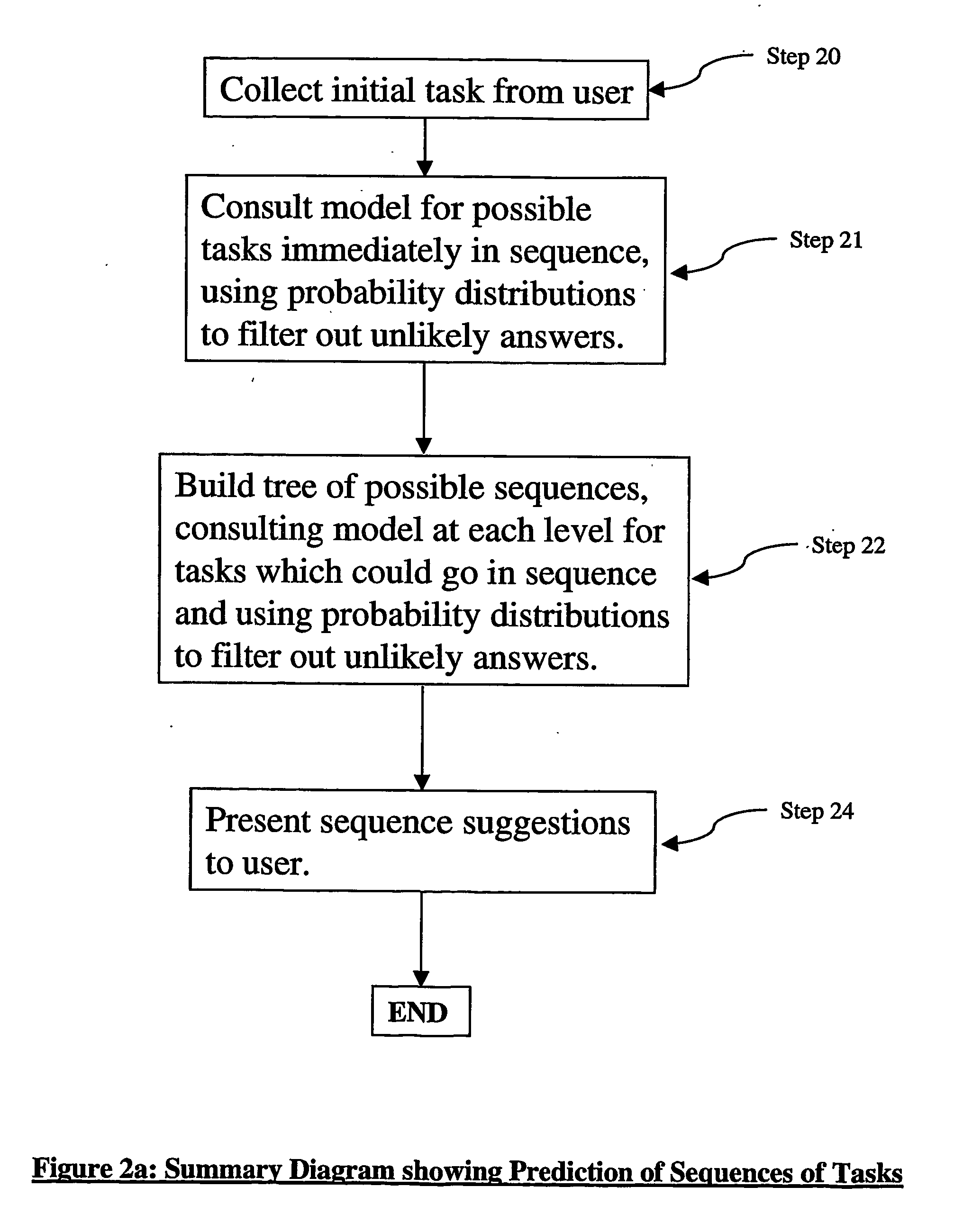Diary management method and system
a management method and system technology, applied in the field of diary management method and system, can solve the problems of large amount of background data available for use, less complex prediction required, and less complexity of user modelling problem
- Summary
- Abstract
- Description
- Claims
- Application Information
AI Technical Summary
Benefits of technology
Problems solved by technology
Method used
Image
Examples
Embodiment Construction
[0064] A first aspect of the invention relates to the construction or derivation of a user model from information such as event records taken from a user's diary. This will be explained in the following section. Second and third aspects relate to the use of such a user model for assisting in the use of scheduling systems such as electronic diary systems using such user models. These will be explained in a later section.
Construction of the User Model
[0065]FIG. 1 gives an overview of the method used for constructing a User Model according to a preferred embodiment of the invention. A primary use of a user model derived according to an embodiment of the present invention is for the learning of sequences of pairs of tasks from a user's diary, e.g. if a user schedules a presentation on a particular project and usually schedules some preparation time in before that presentation then the system can learn this habit and either carry out the scheduling of preparation time automatically or...
PUM
 Login to View More
Login to View More Abstract
Description
Claims
Application Information
 Login to View More
Login to View More - R&D
- Intellectual Property
- Life Sciences
- Materials
- Tech Scout
- Unparalleled Data Quality
- Higher Quality Content
- 60% Fewer Hallucinations
Browse by: Latest US Patents, China's latest patents, Technical Efficacy Thesaurus, Application Domain, Technology Topic, Popular Technical Reports.
© 2025 PatSnap. All rights reserved.Legal|Privacy policy|Modern Slavery Act Transparency Statement|Sitemap|About US| Contact US: help@patsnap.com



